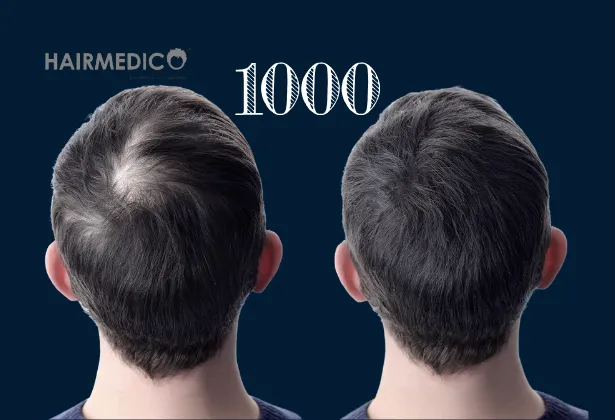
Hair restoration has reached new heights in 2025. Among the various options, a 1000-graft hair transplant stands out for those seeking a noticeable yet natural enhancement of hair density. In this exhaustive guide, we’ll explore every aspect of the 1000-hair-grafts procedure, set realistic expectations, share recovery tips, and showcase real transformations through before-and-after images. Whether you’re just beginning your research or preparing for surgery, this article will light the way to your confident, fuller-haired future.
A 1000-graft transplant typically suits individuals experiencing mild to moderate hair thinning—often limited to the frontal hairline or slight crown recession. In 2025, modern techniques like Follicular Unit Extraction (FUE) and Direct Hair Implantation (DHI) ensure graft survival rates above 95%, minimal scarring, and faster recovery. The procedure generally takes four to six hours, depending on the surgeon’s speed and patient-specific factors such as hair texture and scalp laxity.
Each graft is harvested and implanted with precision to mirror natural hair growth patterns. Clinics like hairmedico lead the field by using advanced imaging and sterile techniques, ensuring that transplanted hair integrates seamlessly with existing strands.
Not everyone is a perfect fit for a 1000-graft transplant. Ideal candidates:
Have localized thinning: Perfect for filling frontal hairline recessions or minor crown patches.
Possess healthy donor hair: Thick, robust follicles at the back and sides of the scalp.
Maintain realistic expectations: Expect a 30–40% increase in density in treated areas.
Enjoy overall good health: Conditions like uncontrolled diabetes may affect healing.
Specialists at hairmedico perform thorough consultations, including scalp examinations and medical history reviews, to confirm candidacy and plan the treatment.
Surgeons evaluate scalp laxity, donor availability, and treatment areas. Digital imaging helps you preview potential outcomes and ensures strategic graft placement.
Local anesthesia: Safe and comfortable.
Donor trimming: Scalp is trimmed to 1–2 mm for optimal extraction.
A micro-punch tool (0.8–1.0 mm) extracts follicular units individually, avoiding linear scars. Donor area heals with tiny, inconspicuous dot scars.
Grafts are stored in a nutrient-rich solution to preserve viability. Technicians count each unit to match your treatment plan.
Using sapphire blades or custom needles, small incisions set the direction, angle, and density for a natural hairline.
Grafts are placed one by one. Skilled teams can implant up to 100 grafts per hour, balancing speed with accuracy.
Preparation starts weeks in advance:
Medication review: Pause blood-thinners as advised.
Lifestyle adjustments: Avoid smoking and limit alcohol.
Hair care: Wash hair the morning of surgery; skip styling products.
Minor discomfort—swelling, redness, crusting—can be managed with prescribed aftercare kits.
Recovery stages:
Day 1–7: Scalp tightness and scabs form.
Week 2–4: Scabs fall off; “shock loss” may occur.
Month 3–4: New hairs begin to sprout.
Month 6: 50–70% of growth visible.
Month 12–14: Final density and texture achieved.
Follow post-op care precisely to maximize graft survival and quality results.
Seeing is believing. Explore authentic transformations at hairmedico to witness how 1000 grafts can rebuild a hairline, boost confidence, and restore a natural look. Each gallery showcases high-resolution, angle-matched photos from pre-op through full recovery.
Gentle cleansing: Use prescribed shampoo without disturbing grafts.
Sun protection: Wear a loose hat or apply SPF when allowed.
Nutrition: Eat protein-rich meals and stay hydrated.
Activity restrictions: Avoid heavy exercise until cleared.
Regular check-ups at hairmedico ensure proper healing and optional PRP treatments for enhanced growth.
Q: Will 1000 grafts look thin on a high forehead?
A: Strategic placement and staggered incisions create natural density.
Q: Can I combine surgery with medications?
A: Yes—Minoxidil and finasteride complement surgical improvements.
Q: Is donor depletion a concern?
A: With 1000 grafts, donor areas remain largely intact, leaving room for future sessions.
A 1000-graft transplant in 2025 offers balanced, natural enhancement without overharvesting donor areas. Cutting-edge FUE and DHI methods, meticulous planning, and dedicated post-op care deliver life-changing results. Discover full transformation stories at hairmedico and embark on your journey to confidence and renewed vitality.